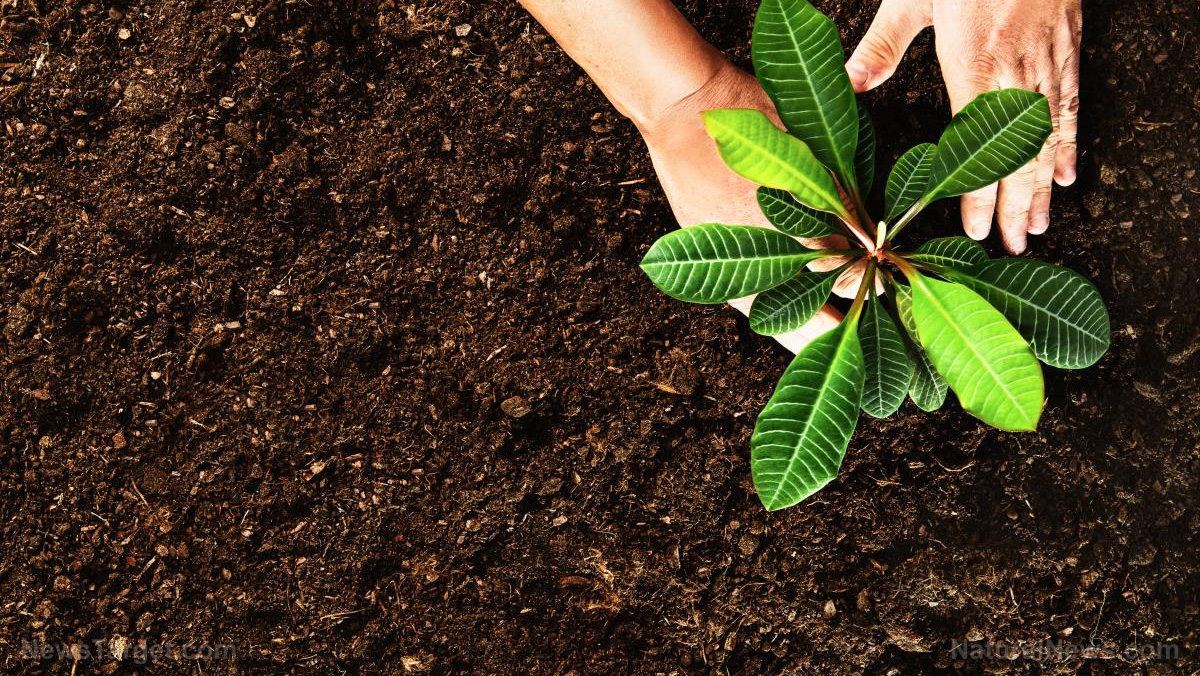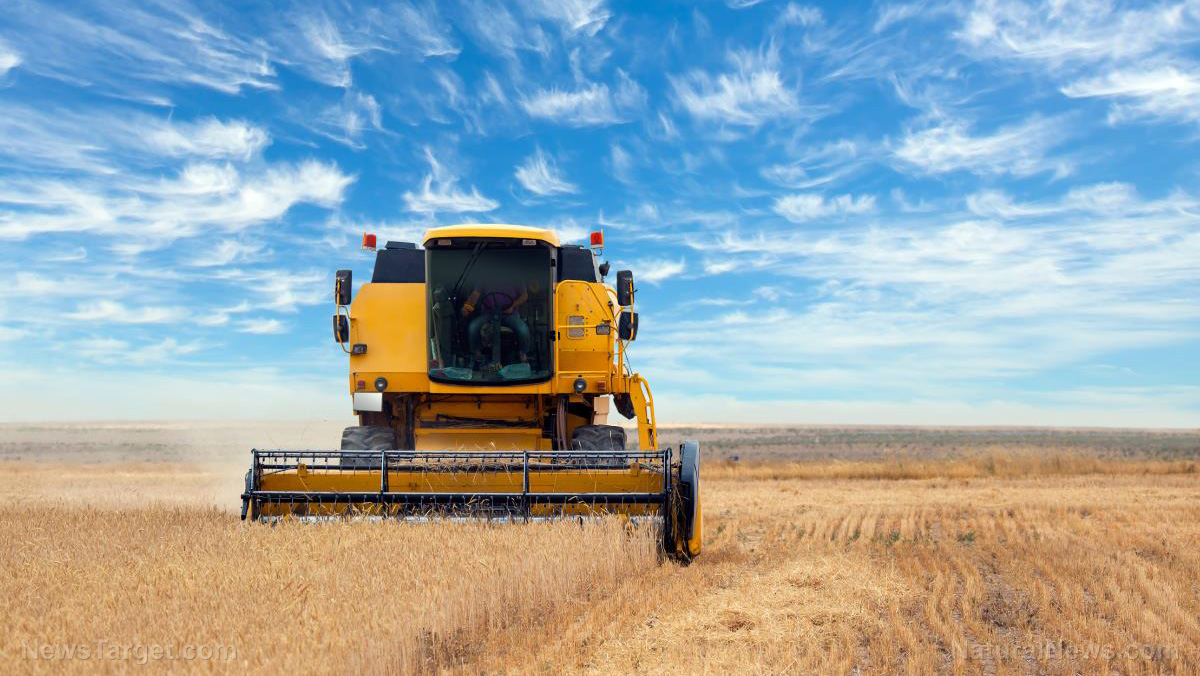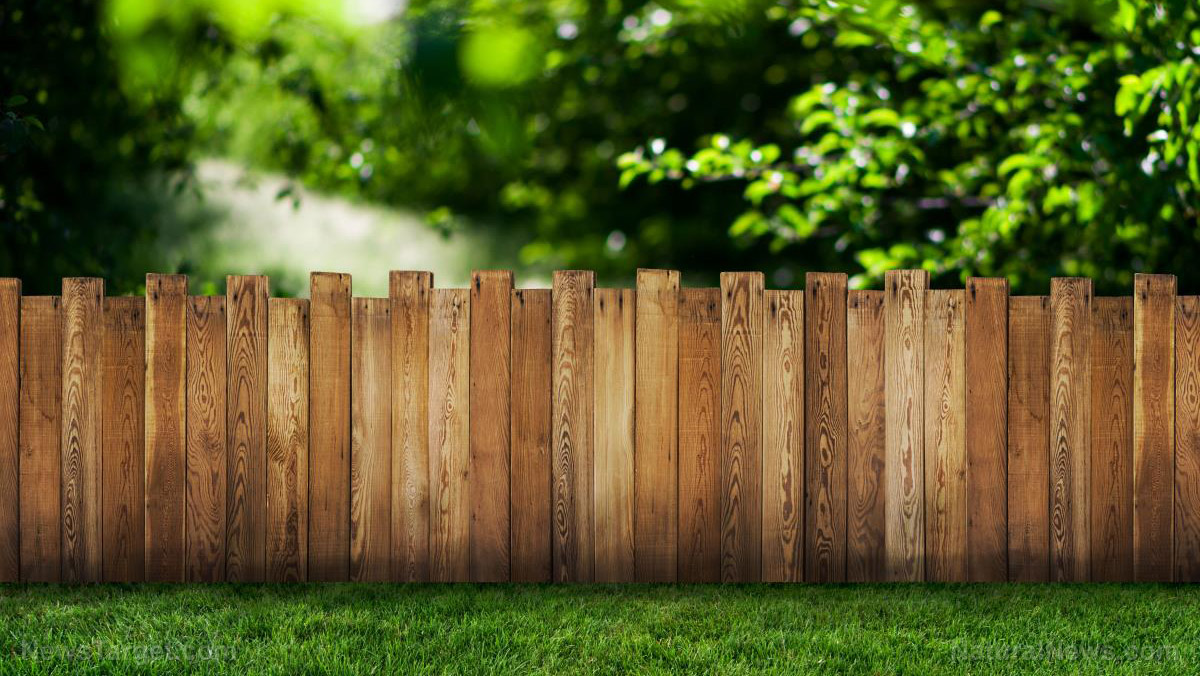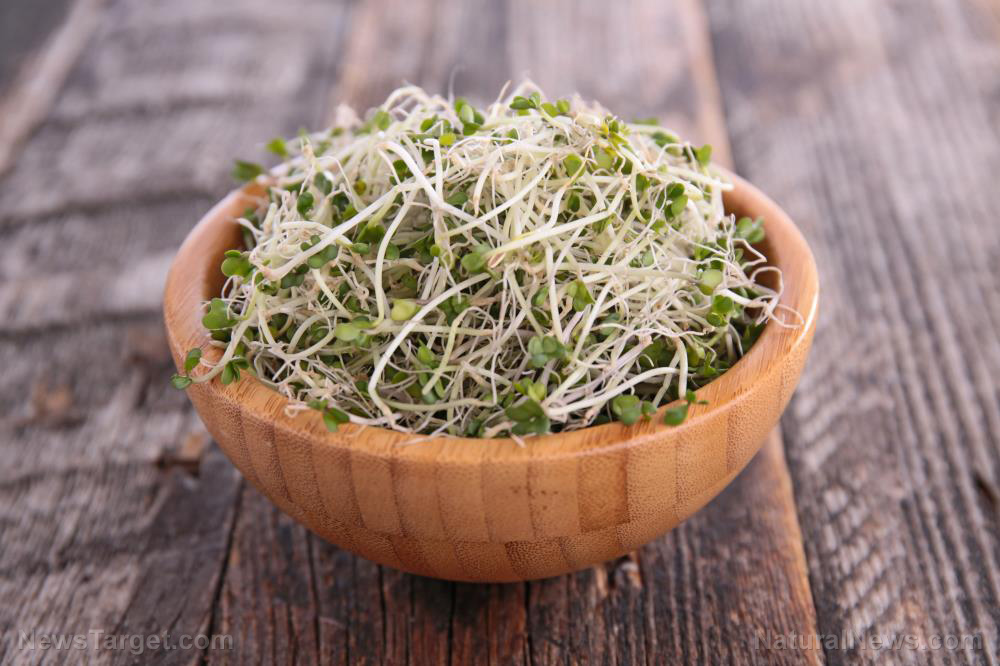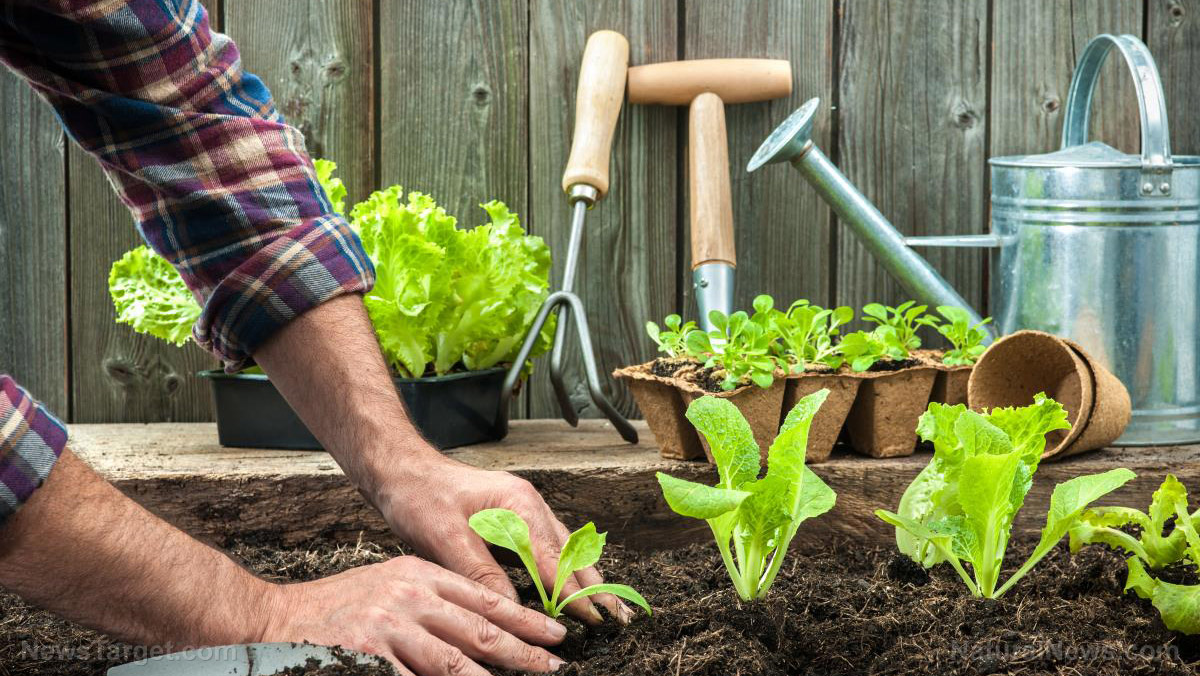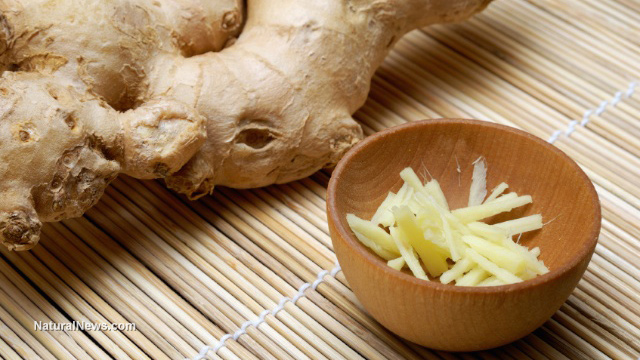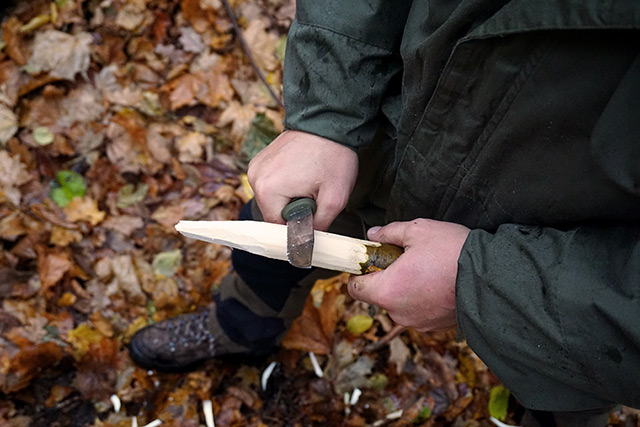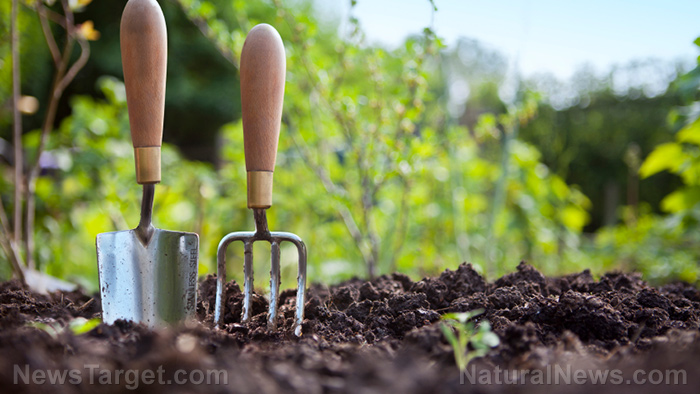Sustainable gardening: What you need to know and do if your land is composed of clay soil
04/10/2023 / By Olivia Cook

Teresa Matteson of Benton Soil and Water Conservation District says most any ground can become a good garden with the right care and maintenance. There’s no need to buy a bunch of potting or garden soil from the soil; the best soil is that which you build yourself naturally.
Identify your soil type
Knowing whether your soil type is chalk, clay, loam, peat, sand or silt will help you determine your soil’s exact condition so you can improve it more effectively and economically.
According to the Royal Horticultural Society, the best way to tell what type of soil you have is by touching it, rolling it in your hands, squeezing it, pouring water onto it to see if it drains quickly, and doing an acid test.
Clay soil has a smearing quality. It is heavy, high in nutrients and cold, sticky and wet in winter and rock hard when baked dry in summer. It is easily rolled into a long, thin sausage and can be smoothed to a shiny finish by rubbing it with your finger. Clay soil is poor at draining and has few air spaces. The soil will warm up slowly in spring and is heavy to cultivate.
Chalky soil is larger-grained and generally stonier compared to the other soils. It is free draining and usually overlays chalk or limestone bedrock. The soil is alkaline, which sometimes leads to stunted growth and yellowish leaves.
Peat soil is high in organic matter and moisture. It is a darker soil that feels damp and spongy due to its higher levels of peat. It is an acidic soil, which slows down decomposition and leads to the soil having fewer nutrients. The peat soil heats up quickly during spring and can retain a lot of water, which usually requires drainage.
Pure silt soil is rare, especially in gardens. It has a slightly soapy, slippery texture, is usually very rich in nutrients and does not clump easily. Silt soils are fertile and light, but moisture-retentive and easily compacted with little effort.
Sandy soil feels gritty. You can feel sand grains within it and it falls through your fingers. It drains easily, dries out fast and is easy to cultivate. Sandy soil warms up fast in spring and tends to hold fewer nutrients as these are often washed away during wetter spells.
Loam soil is a mixture of clay, sand and silt that avoid the extremes of each type. If it is not coarse sand, perhaps it’s sandy loam soil that sticks together better.
Another important aspect of soil type is the pH – its acidity or alkalinity. You can test your garden soil’s acidity or alkalinity with an inexpensive soil kit and assess the primary nutrients your plants will need to grow.
Working with your soil if it’s heavy clay
Heavy clay soil can frustrate even the most optimistic gardener. Here’s how to improve heavy clay soil structure and drainage so your garden can flourish and grow crops that thrive:
Contour your land
Before all the other steps, add contours to your garden terrain by creating a gentle undulation of alternating high peaks and low valleys. Contours of raised-planting berms, terraces, raised beds or even permaculture swales can help slow and manage water. The ideal time to build contours is when the soil is moist but not waterlogged.
Aerate clay soil
Aerate heavy clay soil for water and oxygen to flow more easily by injecting air pockets to improve drainage, break up compaction and invite soil microorganisms. Manual tools like a broad fork, a digging fork and plug coring aerators work well to increase the spaces in the soil for oxygen. Plug aerators are the best because they remove actual plugs from the soil. Spikes can contribute to more compaction in clay soils. Use your tools to aerate twice a year – in the fall as the season ends and in the spring before planting. Take care to mark the irrigation so you don’t run the spikes over any components.
Add soil amendments
Add soil amendments immediately following aeration so that the rain can wash them into the holes and soften the clay. You’ll need lots of organic matter at first to change the structure of your soil.
The following types of organic matter attract microorganisms that speed up soil improvement by developing tunnels (more aeration) and producing plenty of organic matter to break up tightly wound clay particles: homemade compost (an excellent soil conditioner that will improve drainage), green manure (herbal compost teas), leaf mold (valuable mulch and soil builder), livestock manure (another soil conditioner) and worm castings (high in humus, minerals, nitrogen).
Plant a cover crop
Gardening Know How says some of the best cover crops for clay soil are buckwheat, clover and winter wheat. You can also select crops with deep tap roots, like alfalfa and fava beans, to pull nutrients into the topsoil from the subsoil while, at the same time, breaking up the compact clay. Your local extension office will be a huge help in selecting a cover crop that is appropriate for your climate, gardening style, region and soil.
Mulch appropriately
Once you’ve aerated and added soil amendments, add mulch if you won’t be sowing a cover crop because bare soil is a recipe for compaction. You can use shredded leaves because they feed the soil well. Straw used to be an age-old mulch material, but modern straw could be contaminated by herbicides. During rainy periods, mulch lightly so that your soil can breathe and won’t become susceptible to fungal issues. Mulch heavily in dry and hot conditions to protect your soil. (Related: Sustainable gardening starts with good soil.)
Avoid walking on the beds
Create your garden beds narrow enough that you don’t have to walk on them to manage all sides. Garden soil is very expensive when you think about all of the time you’ve taken to improve it, purchase soil amendments and collect and disperse organic material.
Stay disciplined with the process
It won’t take long for soil to return to its original rigid and clumpy state if you don’t keep adding new materials to it. Fertile soil with good tilth does not come about with a single or even several additions of organic material; it needs a consistent soil-building program.
Visit HomeGardeningNews.com for more gardening tips.
Watch the following video to learn how to make garden soil from clay.
This video is from the Daily Videos channel on Brighteon.com.
More related stories:
A guide to planting fruit trees in poor-quality soil.
It’s time you grew your own fruit-bearing trees for food – here’s how.
Sources include:
Submit a correction >>
Tagged Under:
clay soil, green living, home gardening, homesteading, mulching, off grid, organic farming, preparedness, prepper, prepping, self-reliance, soil amendments, survival, sustainable gardening, tips
This article may contain statements that reflect the opinion of the author
RECENT NEWS & ARTICLES
COPYRIGHT © 2017 HOME GARDENING NEWS com


